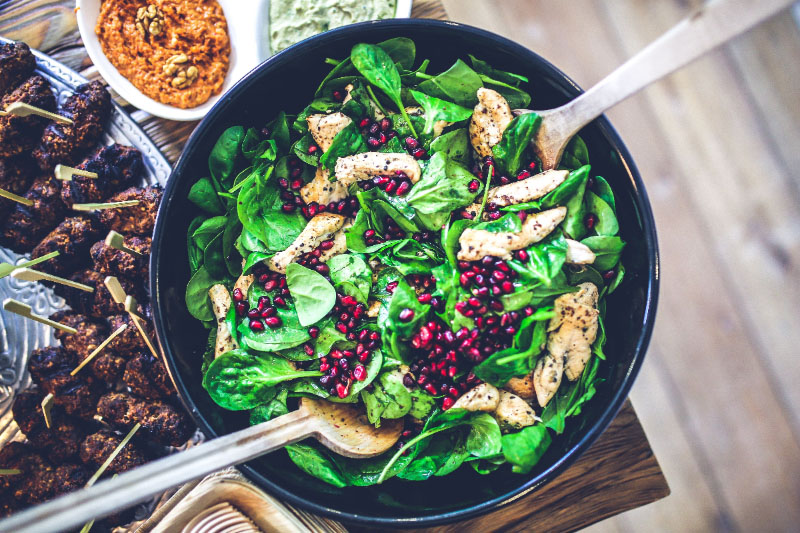Shopping for High Fiber Foods

Studies find those consuming a high-fiber diet to be at lower risk for heart disease.
Soluble fiber reduces total and LDL cholesterol levels and improves insulin resistance. Foods containing insoluble fiber are consistently associated with lower rates of cardiovascular disease.
How much dietary fiber?
There are two types of dietary fiber: soluble and insoluble.
Soluble fibers absorb water during digestion, increasing stool bulk and decreasing cholesterol levels.
Insoluble fibers are not impacted by digestion and promote normal movement of intestinal contents.
The Institute of Medicine recommends 25 grams per day for women and 38 grams per day for men if under the age of 50. For those over 50-years-old, the recommendation is 30 grams for men and 21 grams for women.
Too little dietary fiber?
A diet low in fiber increases risk for heart disease, diabetes, diverticular disease, and constipation.
Most American’s consume only 15 grams of dietary fiber daily.
Too much dietary fiber?
Risk of consuming too much fiber is minimal. The side effects of too much fiber are typically associated with increasing fiber intake too quickly. If you currently consume a diet low in fiber, you want to gradually add more fiber-rich foods to your diet. Increasing fiber intake too quickly can lead to:
- Abdominal pain
- Flatulence
- Bloating
- Diarrhea
- Intestinal blockage in those with Chron’s disease
- Reduced blood sugar (important to know if you have diabetes)
How to consume a high fiber diet every day
Obtaining needed nutrients in your diet is always preferable to supplements and fortunately there are many foods rich in fiber.
What can you do to ensure you receive 25-38 grams dietary fiber daily?
Let’s navigate the grocery store to determine what departments and aisles to include on your shopping list for fiber-rich foods.
Dry goods
Lentils, cooked, ½ cup – 7.8 grams
Flax seed, 2 Tablespoons – 7 grams
Whole grain pasta, cooked, 1 cup – 6.8 grams
Bran Flakes, ¾ cup – 5 grams
Steel cut oats, dry, ¼ cup – 5 grams
Bulgur, ½ cup – 4.1 grams
Whole grain bread, 1 slice – 4 grams
Rolled Oats, dry, ¼ cup – 4 grams
Teff, cooked, ½ cup – 3.6 grams
Brown Rice, cooked, 1 cup – 3.5 grams
Wild Rice, cooked, 1 cup – 3 grams
Pearled barley, cooked, ½ cup – 3 grams
Canned goods
Navy beans, ½ cup – 9.6 grams
Kidney beans, ½ cup – 7.9 grams
Black beans, ½ cup – 7.5 grams
Refried beans, ½ cup – 6 grams
Garbanzo beans (aka chickpeas), drained, ½ cup – 6 grams
Pumpkin, ½ cup – 3.5 grams
Rinse canned vegetables in water to reduce sodium content.
Snacks
Popcorn, air popped, 3 cups – 3.5 grams
Almonds, 1 ounce – 3.5 grams
Pistachios, 1 ounce – 2.9 grams
Produce
Orange, medium, peeled – 3.1 grams
Banana, medium, peeled – 3.1 grams
Avocado, ¼ avocado – 3.4 grams
Dried figs, ¼ cup – 3.7 grams
Carrots, 1 cup – 3.6 grams
Sweet potato, medium, baked with skin – 3.8 grams
Sugar snap peas, cooked, 1 cup – 4 grams
Russet potato, medium, baked with skin – 4 grams
Apple, medium, with skin – 4.4 grams
Artichoke hearts, ½ cup – 4.8 grams
Broccoli, cooked, 1 cup – 5.1 grams
Pears, medium with skin – 5.5 grams
Parsnips, cooked, 1 cup – 5.6 grams
Butternut squash, baked, 1 cup – 6.6 grams
Blackberries, 1 cup – 7.6 grams
Raspberries, 1 cup – 8 grams
Green peas, cooked, 1 cup – 7.2 grams
Purchasing frozen produce does not compromise fiber content.
The best benefit of high-fiber foods
Most high fiber foods fit into a “two birds with one stone” category. For example, not only are raspberries and blackberries high in fiber, they are also high in heart healthy antioxidants. Not only is flax seed high in fiber, it is also a great source of heart-healthy omega 3’s.
You cannot go wrong if you work on adding dietary fiber to your diet to promote heart health.
For more information on foods and diet to lower cholesterol and promote heart health, sign up for my free e-course How to Lower Cholesterol in 8 Simple Steps HERE.
All the best,
Lisa Nelson RD
Health Pro for HealthCentral



